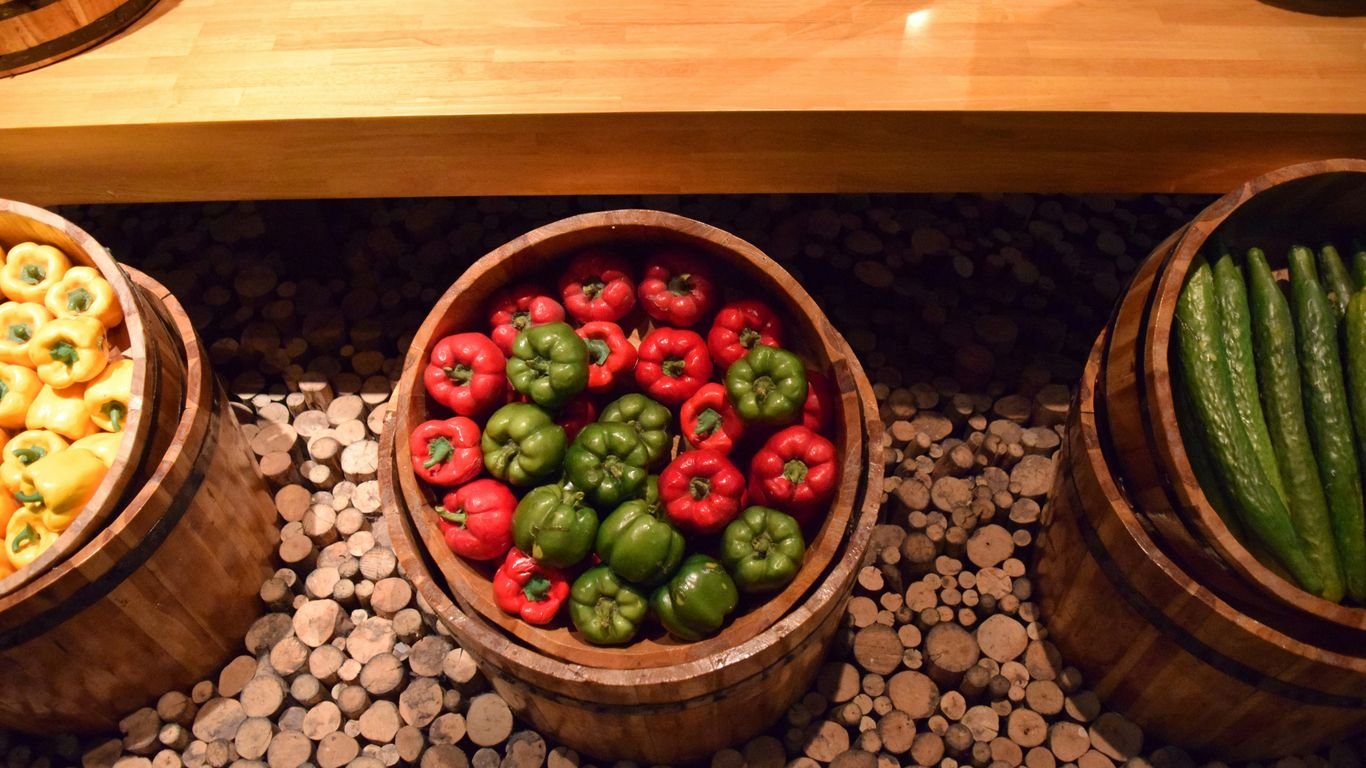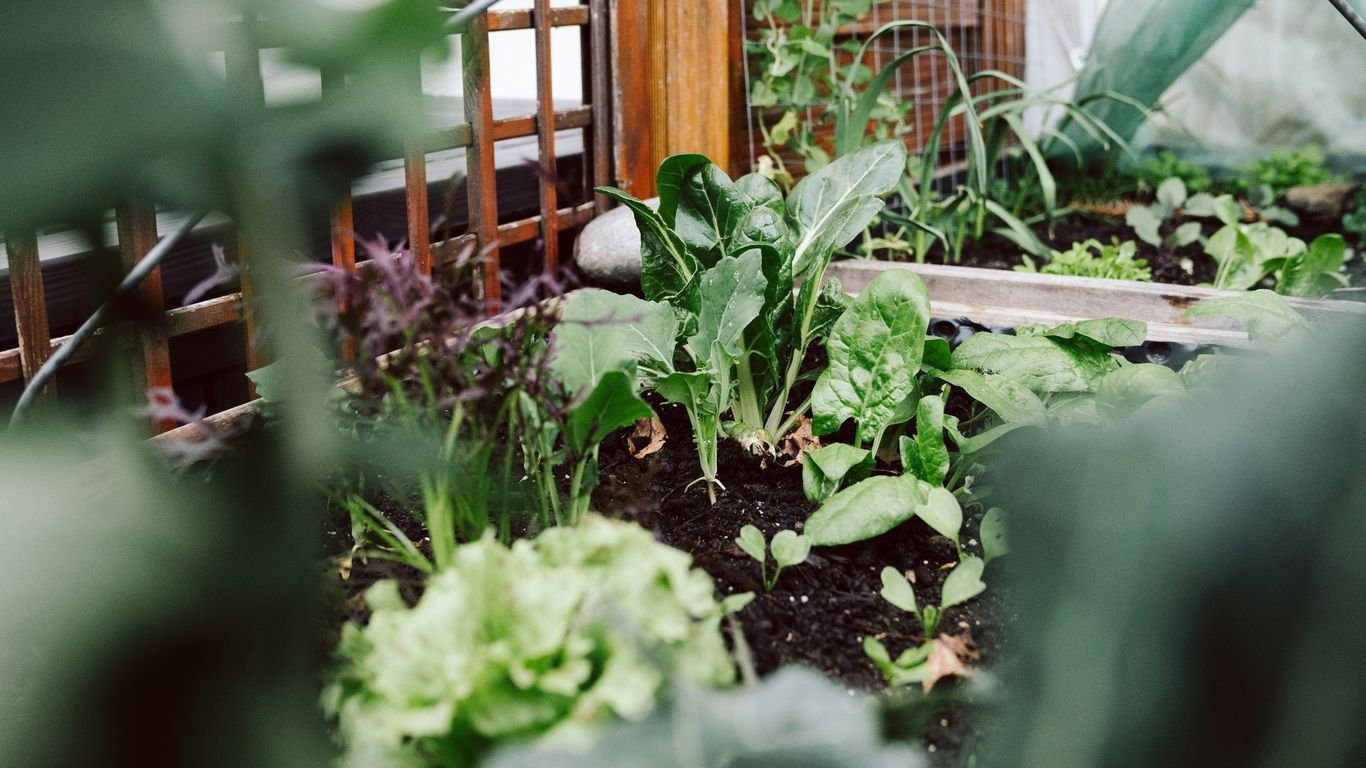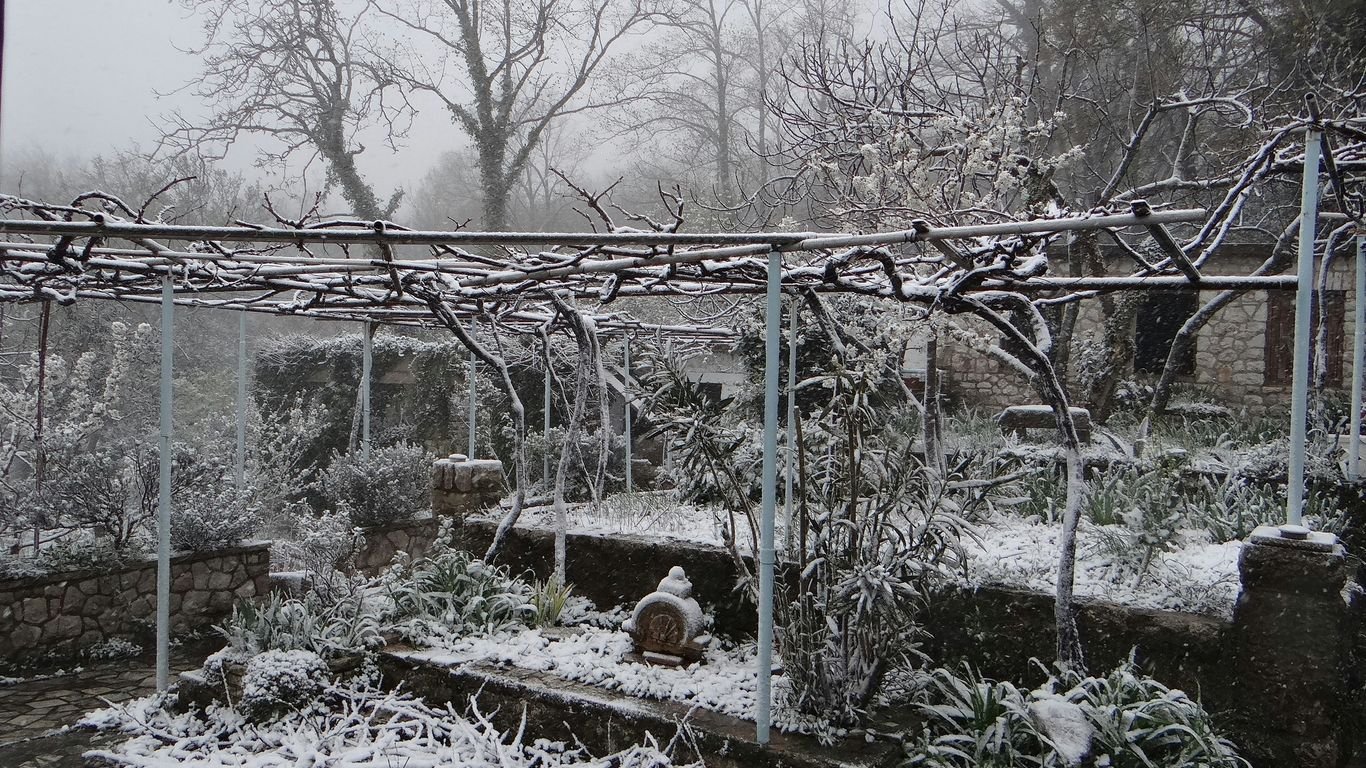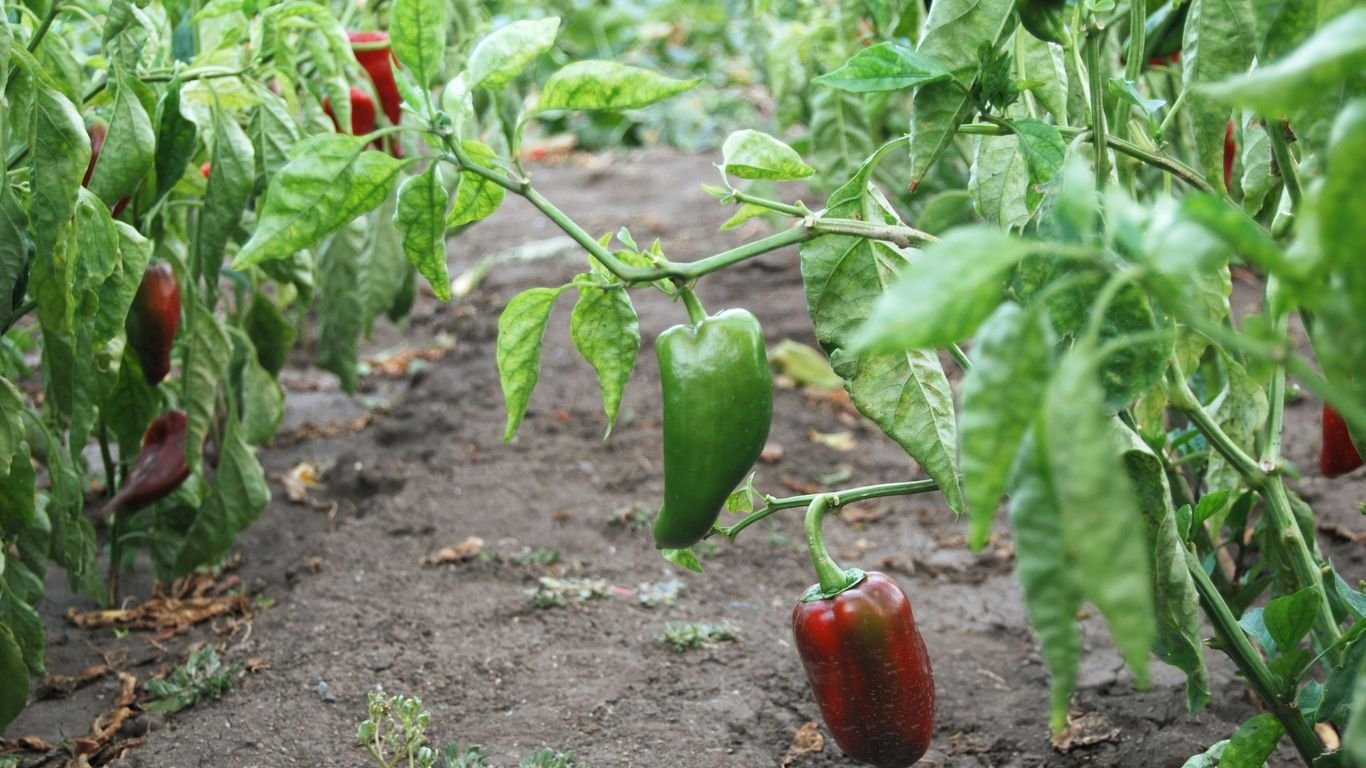March Canning Calendar: Starting Early with Peas, Radishes, and Herbs

February might still feel like winter in many places, but for those of us who love to preserve food, the gardening itch is already starting. March is the perfect time to get a head start on our canning goals, even if the ground outside is still too cold to plant. We can use this month to get our supplies in order, plan our gardens, and start some seeds indoors. Let’s get ready for a bountiful harvest with our march canning calendar.
Key Takeaways
- Before diving into planting, we should check our inventory of canning supplies like jars, lids, and rings to make sure we have everything we need for the season ahead.
- Reviewing our garden plan now helps us decide which early spring crops, like peas and radishes, we want to focus on for our march canning calendar.
- Starting cool-season herbs like basil indoors in March gives us a head start for preserving them later in the year.
- We need to check if our garden beds are workable in March to amend the soil with compost and prepare for planting.
- Thinking about what can be pickled or preserved early in the season helps us plan our march canning calendar effectively.
Getting Started With Your March Canning Calendar
March is a hopeful month for gardeners, especially those looking to preserve the harvest. Even if the ground is still frozen solid where you are, this is the time to get things moving indoors and start prepping your space. It’s about setting the stage so you’re ready when the warmer weather finally arrives.
Inventory Your Canning Supplies
Before we get too deep into planting and prepping, let’s take a moment to check in on our canning supplies. It’s easy to forget what you have or what you need until you’re elbow-deep in tomatoes and realize you’re short on lids. A quick inventory now can save a lot of stress later.
- Jars: Count up your jars. Do you have enough of the sizes you prefer (pints, quarts)?
- Lids and Rings: Check your stash of new lids and rings. Lids are single-use, so make sure you have plenty for the season ahead. Rings can be reused if they aren’t rusted or bent.
- Canning Tools: Do you have your funnel, jar lifter, ladle, and headspace tool? Are they clean and in good working order?
- Specialty Items: Don’t forget things like pickling salt, vinegar, pectin, or Clear Jel if you plan on making pickles, jams, or pie fillings.
Taking stock now means you can order anything you’re missing before the busy season hits and prices might go up.
Review Your Garden Plan
Remember that garden plan you sketched out back in January or February? Now’s a good time to pull it out and give it another look. Are you still happy with the crops you’ve chosen? Does the layout make sense for your space and your canning goals? Think about what you actually want to have in your pantry this fall. If you’re aiming for a lot of salsa, make sure you’ve planned for enough tomatoes and peppers. If pickles are your jam, ensure you’ve got cucumber varieties that are good for pickling.
Understand Your Local Frost Date
Knowing your average last frost date is super important for timing everything from starting seeds indoors to transplanting seedlings outside. You can usually find this information online by searching for your specific region or county’s agricultural extension office. Once you have that date, you can work backward to figure out when to start certain seeds indoors and when it’s safe to sow others directly into the ground. This date is your key to avoiding planting too early and losing tender plants to a late cold snap.
Early Spring Crops For Your March Canning Calendar

March is when we start to feel that gardening itch, even if the ground is still a bit too chilly to get our hands dirty outside. This is the perfect time to get a head start on some crops that can be ready for canning sooner rather than later. We’re talking about those quick growers that give us a taste of the harvest even before summer truly kicks off.
Planting Peas Indoors
Peas are one of those cool-season crops that actually do pretty well with a little indoor head start. We can sow them in pots or seed trays a few weeks before the last frost. This gives them a stronger root system and gets them ready to go into the ground as soon as it’s workable. By starting peas indoors, we can often get a jump on the harvest by a week or two. This means we might be able to get a batch of peas canned or frozen earlier than usual.
Sowing Radishes For Quick Harvests
Radishes are champions of speed. Seriously, some varieties can go from seed to harvest in as little as 25 days. We can direct sow these right into the garden beds as soon as the soil can be worked. They don’t take up much space, and they’re great for filling in gaps while we wait for slower-growing crops. Plus, pickled radishes are a fantastic way to use up an early, abundant harvest.
Starting Cool-Season Greens
While not always the first things we think of for canning, some hardy greens can be started indoors in March for an early harvest. Think about things like spinach and kale. We can get these seedlings going inside and transplant them out once the weather is a bit more forgiving. If we get a bumper crop, spinach can be blanched and frozen, and kale can be used in soups or dehydrated for later. It’s all about planning ahead for those pantry shelves.
Getting a jump on planting in March means we’re setting ourselves up for a more continuous harvest throughout the growing season. It’s about working with nature’s timeline and giving ourselves a little extra breathing room when the summer canning rush hits.
Herbs To Grow In March For Canning
March is a fantastic time to get a head start on growing herbs that we can preserve later. We’re not just talking about the usual suspects; we can get a jump on some favorites right now. Starting some herbs indoors is key to having a good supply for canning.
Starting Basil Indoors
Basil is one of those herbs that just screams summer, but we can get a head start on it indoors. It really doesn’t like the cold, so starting seeds inside is the way to go. We want to get them going about 4-6 weeks before our last frost date. Use a good seed-starting mix and keep them consistently moist and warm. Once they get a few sets of true leaves, we can think about transplanting them outside, but for now, a sunny windowsill is their happy place. We can use this basil for pesto, drying, or even making infused oils later on.
Preparing Lavender For Preservation
Lavender is another herb that does well when started early. While we can plant lavender outdoors in March in some climates, starting it from seed indoors gives us more control. It prefers well-drained soil, so make sure your potting mix isn’t too heavy. Lavender is great for making sachets, but we can also dry it for teas or even make lavender-infused vinegar. It’s a pretty hardy plant once established, and having a good amount ready for drying means we can enjoy its scent and flavor all year.
Considering Other Hardy Herbs
Beyond basil and lavender, there are other herbs we can consider. Mint and parsley are quite forgiving and can often be started from seed indoors or even from cuttings. Chives are also pretty easy to grow from seed. These herbs are great for adding fresh flavor to dishes, but they also dry well for later use. We can also think about herbs like lemon balm, which is wonderful for teas and can be dried or made into oils. Getting these started now means we’ll have a plentiful harvest to preserve later when the main growing season kicks into high gear.
Preparing Your Garden Beds In March

March is that exciting time when we start thinking about getting our hands dirty, even if the ground is still a bit chilly. Before we can get those seeds in the soil, we need to make sure our garden beds are in tip-top shape. It’s all about setting ourselves up for success later on.
Checking Soil Workability
First things first, we need to see if our soil is ready to be worked. If you try to dig when it’s too wet, you can really mess up the soil structure, making it hard and clumpy. A good test is to grab a handful of soil and squeeze it. If it forms a tight ball that doesn’t crumble when you poke it, it’s too wet. If it crumbles easily, you’re good to go. We want soil that feels like a damp sponge, not a mud pie.
Amending Soil With Compost
Once we know the soil is workable, it’s time to give it a good boost. This is where compost comes in. We’ll want to spread a generous layer of compost over the beds. This stuff is like a superfood for our plants, adding nutrients and improving drainage. We can gently work it into the top few inches of soil with a fork or a spade. Don’t overwork it; we’re just trying to mix it in, not pulverize it.
Adding Fresh Mulch
After we’ve amended the soil, adding a fresh layer of mulch is a great idea. Mulch helps keep moisture in, suppresses weeds, and regulates soil temperature. We can use straw, shredded leaves, or wood chips. Just spread a layer a couple of inches thick around where your plants will go. This protects the soil and gives it a nice, tidy look while we wait for planting time.
Getting the beds ready now means less work and more planting when the weather really warms up. It’s a bit of prep that pays off big time.
Here’s a quick rundown of what we’re looking for:
- Soil Moisture: Squeeze a handful. If it crumbles, it’s ready. If it stays in a tight ball, wait a bit longer.
- Compost Layer: Aim for about 2-3 inches spread evenly over the bed.
- Mulch Application: Another 2-3 inches, keeping it a little away from where the plant stems will be to prevent rot.
Canning Specifics For March
March is a fantastic time to start thinking about what we can preserve from our early spring harvests. While it might not be the peak canning season yet, there are definitely some items we can get a head start on. It’s all about being proactive and getting those early crops into jars.
What Can Be Pickled Early
Pickling is a great way to preserve those crisp, fresh spring vegetables. Radishes, for instance, are perfect for quick pickling. We can get a batch going as soon as they’re ready, and they’ll be ready to eat in no time. Think about making some quick pickled radishes to add a tangy crunch to salads or sandwiches. Other early spring vegetables like asparagus or even some tender spring onions can also be pickled. It’s a simple process that doesn’t require a lot of fuss, and it’s a wonderful way to enjoy those early garden flavors long after they’re out of season. You can find some great recipes for quick pickled vegetables that are perfect for this time of year.
Preserving Early Greens
While we often think of canning tomatoes or peaches, we can also preserve some of our early greens. Spinach and kale, which we might be starting indoors or harvesting from early outdoor plantings, can be blanched and frozen. While freezing isn’t canning, it’s a vital part of preserving our harvest. If we’re looking to can them, it’s usually best to do so in combination with other ingredients, like in a soup base or a vegetable medley, as greens can sometimes lose their texture when canned on their own. We should also consider drying herbs like parsley or chives that are growing well; dried herbs are a pantry staple.
Planning For Future Canning Projects
March is also the perfect time to plan for the bigger canning projects that will come later in the spring and summer. We should take stock of our canning supplies – jars, lids, rings, and any special equipment. It’s also a good time to review our garden plans and see what produce we expect to have in abundance. This foresight helps us avoid being overwhelmed when the harvest is at its peak. We can start making a list of recipes we want to try and the ingredients we’ll need. Thinking ahead now means smoother canning sessions later on.
It’s easy to get caught up in the excitement of planting and growing, but don’t forget the preservation part. A little planning in March can save a lot of stress when your garden is overflowing.
Wrapping Up Our March Garden Plans
So, there we have it! March is really the month where we start to see some real action in the garden, even if it’s just inside on the windowsill. We’ve talked about getting those early peas and radishes going, and how to handle all those fresh herbs. It feels good to get a head start, right? We’re setting ourselves up for a successful canning season later on. Don’t worry if you didn’t get to everything on the list; the garden is always forgiving. The main thing is we’re getting our hands dirty and thinking about what we want to preserve. Let’s keep this momentum going!
Frequently Asked Questions
What kind of supplies do we need to get ready for canning in March?
Before we start planting, we should check that we have enough jars, lids, and rings. It’s also a good idea to make sure we have things like canning salt, vinegar, and pectin if we plan on making pickles or jams.
Can we plant peas outside in March?
If the ground has thawed where we live, we can start planting peas directly outside. If not, we can wait a little longer or start them indoors.
What herbs can we start growing indoors in March?
March is a great time to start herbs like basil indoors. We can also get lavender ready for preservation later in the year.
How do we know when to start planting certain crops?
We need to know our local frost date. This helps us figure out when it’s safe to plant seeds outside and when to move seedlings from indoors to the garden.
What are some early spring crops that are good for canning?
Peas and radishes are good options for early harvests. We can also preserve early greens like spinach and kale.
Besides planting, what else should we do in the garden in March?
We should check if our garden beds are ready to work. If the soil is good, we can add compost or fresh mulch to get it ready for the growing season.






